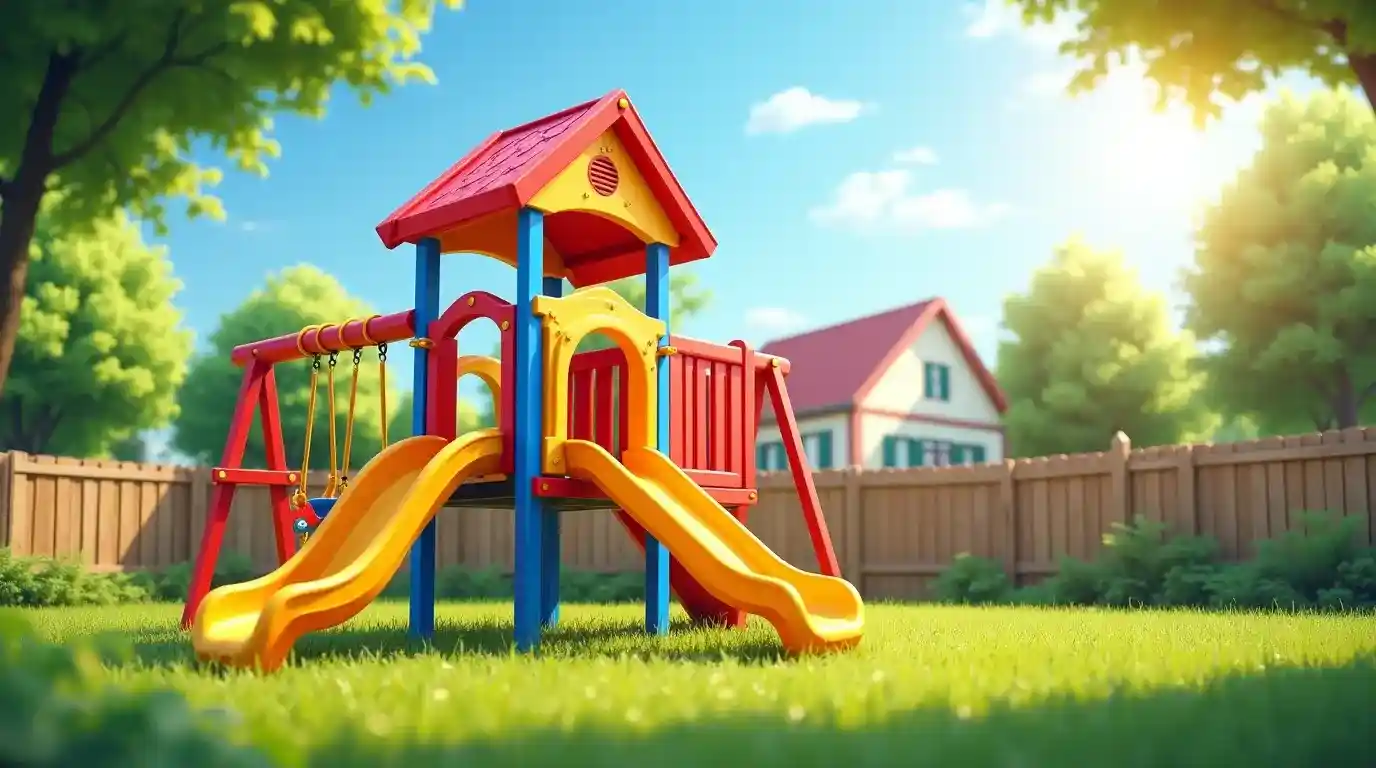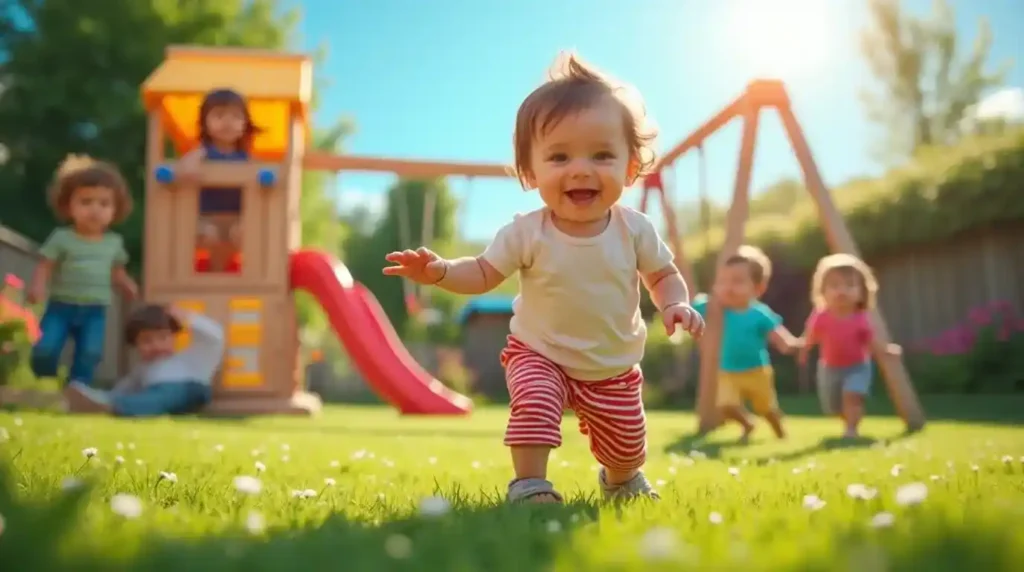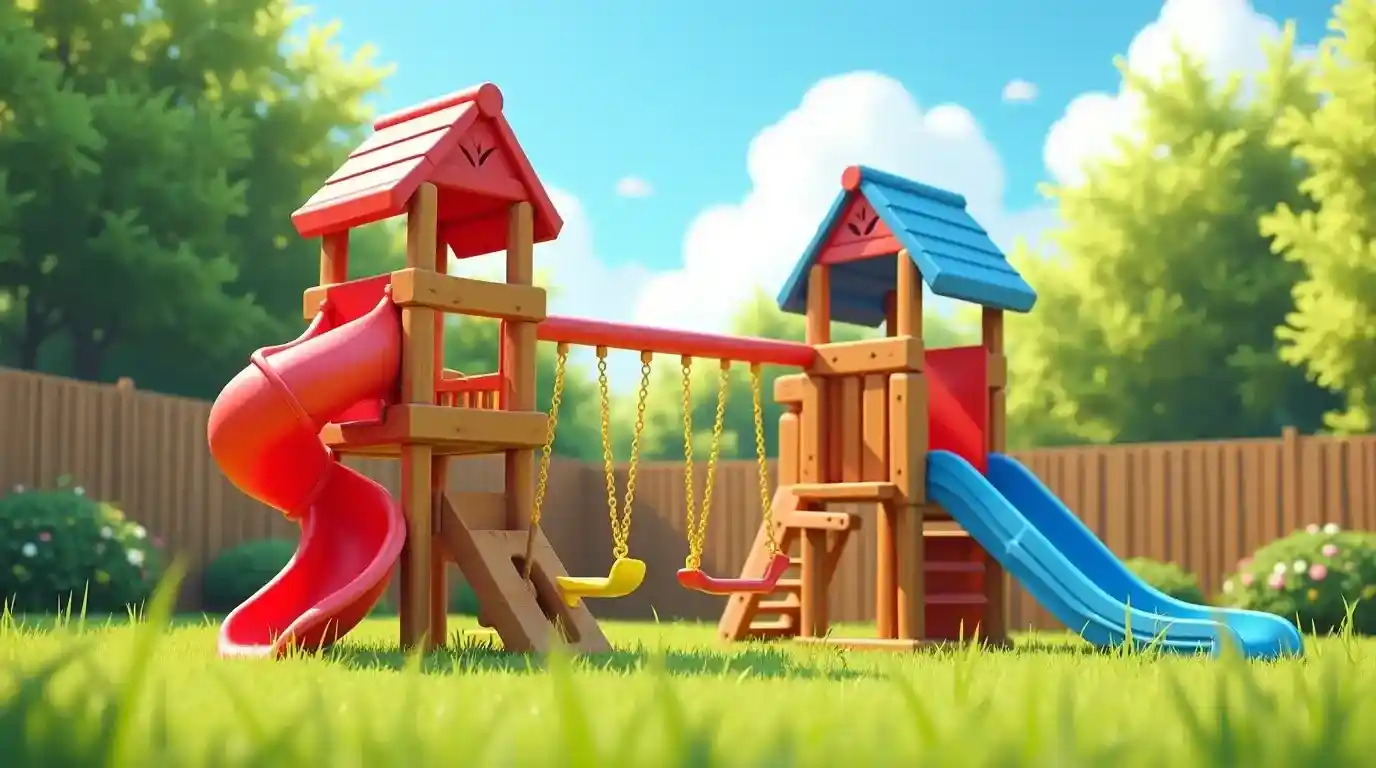Outdoor Playset For Toddlers
There’s nothing quite like the joy of watching my little one giggle with excitement as they climb, swing, and slide on a playset. As a parent, I want to provide my toddler with a safe and engaging outdoor play area that encourages physical activity, creativity, and social interaction. But choosing the best outdoor playset for toddlers can feel overwhelming with so many options available. Safety, durability, space, and age-appropriate features all play a crucial role in making the right decision.
In this guide, I’ll walk you through the essential factors to consider, helping you make an informed choice that will bring years of fun and development to your child.
Table of Contents
Understanding Your Toddler’s Needs
Developmental Benefits of Outdoor Play
An outdoor playset for toddlers isn’t just a fun addition to the backyard—it’s an investment in their physical, cognitive, and social development.
- Physical Growth: Playsets encourage climbing, swinging, and sliding, which help develop motor skills, balance, and coordination.
- Cognitive Development: Exploring different play elements fosters problem-solving skills and imaginative play.
- Social Interaction: A playset can become the perfect setting for toddlers to learn sharing, turn-taking, and teamwork with siblings and friends.
Age-Appropriate Features
Not all playsets are suitable for toddlers. When choosing one, I always check that it includes:
- Low Platforms: Ensuring that slides and climbing areas aren’t too high reduces the risk of falls.
- Gentle Swings: Bucket swings or toddler-friendly seats offer better support.
- Easy-to-Climb Steps: Wide, shallow steps with handrails are best for tiny feet.
- Safe Slides: A shorter slide with a gradual slope prevents harsh landings.
By selecting a playset designed for toddlers, I can ensure my child stays safe while still being challenged enough to develop their skills.

Safety First: Essential Considerations
Material Quality
A safe outdoor playset for toddlers starts with high-quality, non-toxic materials. I always look for:
- Non-Toxic Plastic or Wood: Ensuring no harmful chemicals are used in paints or finishes.
- Smooth Surfaces: Preventing splinters or sharp edges.
- Weather Resistance: UV-resistant plastics and treated wood for durability.
Structural Integrity
- Wide Base for Stability: A low, broad design prevents tipping.
- Secure Fastenings: Screws, bolts, and joints should be tight and rust-proof.
- Weight Limit Compliance: Checking the maximum weight ensures safe play.
Safety Standards Compliance
I always choose playsets that meet CPSC (Consumer Product Safety Commission) or ASTM (American Society for Testing and Materials) standards. These certifications indicate that the playset has undergone rigorous safety testing.
Space and Placement in Your Yard
Assessing Available Space
Before purchasing an outdoor playset for toddlers, I measure the available space and ensure:
- The playset fits comfortably without making the yard feel cramped.
- There’s at least a 6-foot clearance around the playset for safety.
Ground Surface
The right surface can significantly reduce the impact of falls. I consider:
- Rubber Mulch – Soft and shock-absorbent.
- Playground Sand – Affordable and cushioned.
- Rubber Mats – Low maintenance and easy to clean.
Hard surfaces like concrete are a big no, as they increase the risk of serious injury.
Material Choices: Wood vs. Plastic vs. Metal
Each material has its pros and cons, and I evaluate them carefully before making a decision.
Wooden Playsets
✅ Sturdy and long-lasting ✅ Natural aesthetic that blends with the yard ❌ Requires regular maintenance (sealing, painting)
Plastic Playsets
✅ Lightweight and easy to move ✅ Low maintenance and weather-resistant ❌ Less durable for long-term use
Metal Playsets
✅ Strong and stable ✅ Often more affordable ❌ Can get hot in summer and may rust over time
For a toddler, I lean toward plastic or well-maintained wood, as they are safer and more forgiving.

Budgeting and Value
Cost vs. Longevity
A good outdoor playset for toddlers should strike a balance between affordability and durability. Investing a bit more upfront for a high-quality playset saves money in the long run.
Additional Features
I also consider whether the playset includes:
- Swing Attachments
- Interactive Panels (tic-tac-toe, steering wheels)
- Modular Expansion (so it can grow with my child)
These extras can enhance the play experience and extend the playset’s usability.
Conclusion
Selecting the best outdoor playset for toddlers takes careful planning. By considering safety, space, materials, and budget, I can ensure my child has a playset that provides years of fun and developmental benefits. Investing in a high-quality playset today means endless outdoor adventures and cherished memories tomorrow.
(FAQs) – Outdoor Playset For Toddlers
Q1: What safety features should I prioritize when choosing an outdoor playset for toddlers?
I always look for rounded edges, sturdy construction, and non-toxic materials. A stable base and safety certifications like ASTM or CPSC compliance are also essential.
Q2: What’s the best surface under a playset for added safety?
I prefer rubber mulch or rubber mats because they provide excellent shock absorption. Sand is another good option, though it requires regular leveling.
Q3: How do I maintain a wooden playset?
Regularly checking for splinters, sealing the wood, and tightening bolts helps extend the life of a wooden playset.
Q4: Can I install a playset myself, or should I hire a professional?
Many playsets come with detailed instructions for DIY assembly. However, if I’m unsure, hiring a professional ensures proper installation and safety.
Q5: How can I make an outdoor playset more engaging for my toddler?
Adding accessories like climbing walls, tunnels, and interactive elements like a pretend driving wheel can make the playset more exciting and beneficial for development.
Q6: At what age should a child get a swing set?
Most children can start using a swing set around 18 months, with toddler-friendly bucket swings being the safest option for younger kids.
Q7: Is it cheaper to build a playground or buy one?
Buying a pre-made playset is often more cost-effective and safer, as it meets safety standards. However, a DIY playground can be customized to fit specific needs.
Q8: What is the safest type of swing?
Bucket swings with high backs and safety straps are the safest for toddlers, as they provide proper support and reduce the risk of falling.
Q9: When to get rid of a playset?
A playset should be replaced if it shows significant wear, such as cracked wood, rusted metal, or broken plastic parts that compromise safety.
A well-chosen outdoor playset for toddlers isn’t just a backyard feature—it’s a space where childhood memories are made. With careful planning, I can create a fun and safe environment where my little one can explore, grow, and play to their heart’s content!

